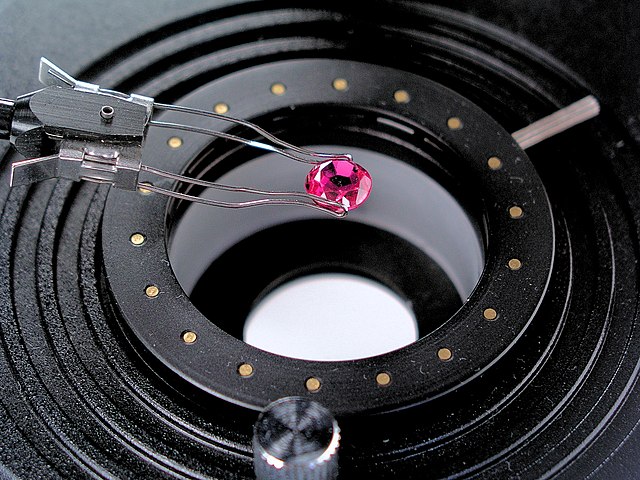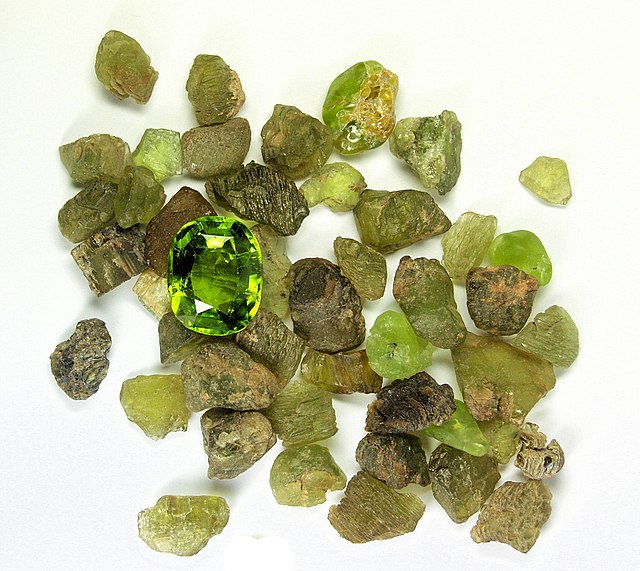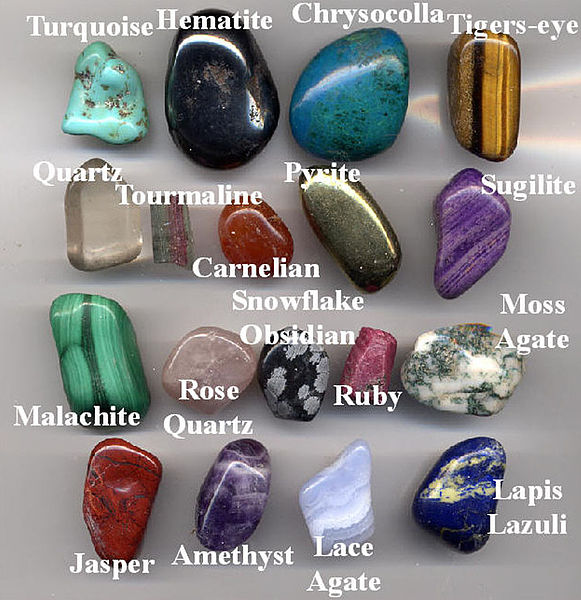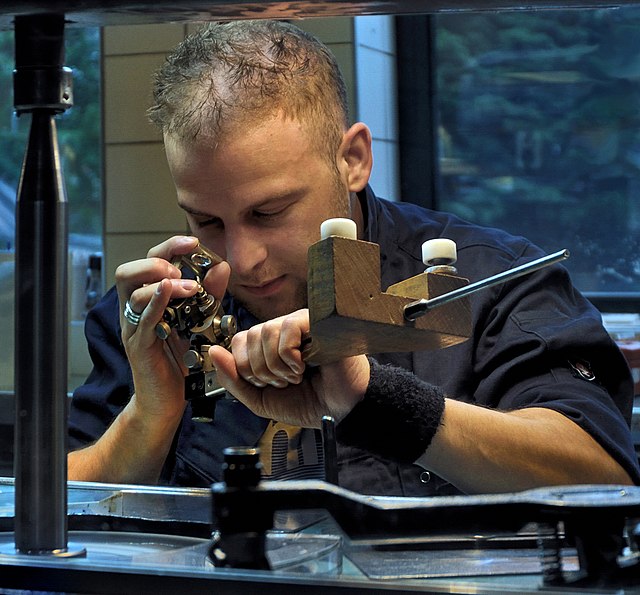Gemology or gemmology is the science dealing with natural and artificial gemstone materials. It is a geoscience and a branch of Stoneology and mineralogy. Some jewelers are academically trained gemologists and are qualified to identify and evaluate gems.
Examining a pink sapphire under a gemmological microscope
Peridot (Mg, Fe)2SiO4 in the rough form and a cut and polished gem.
Gemmological travel lab KA52KRS
A selection of ornamental, non-precious stones made by tumbling rough pebbles with abrasive grit in a rotating drum. The biggest pebble here is 40 millimetres (1.6 in) long.
A gemstone is a piece of mineral crystal which, when cut or polished, is used to make jewelry or other adornments. Certain rocks and occasionally organic materials that are not minerals may also be used for jewelry and are therefore often considered to be gemstones as well. Most gemstones are hard, but some softer minerals such as brazilianite may be used in jewelry because of their color or luster or other physical properties that have aesthetic value. However, generally speaking, soft minerals are not typically used as gemstones by virtue of their brittleness and lack of durability.
A collection of gemstone pebbles made by tumbling the rough stones, except the ruby and tourmaline, with abrasive grit inside a rotating barrel. The largest pebble here is 40 mm (1.6 in) long.
Spanish emerald and gold pendant at Victoria and Albert Museum
Enamelled gold, amethyst, and pearl pendant, about 1880, Pasquale Novissimo (1844–1914), V&A Museum number M.36-1928
A diamond cutter in Amsterdam








